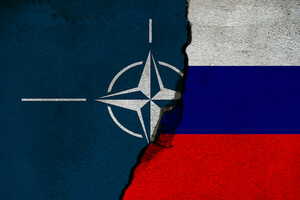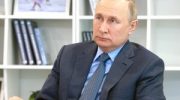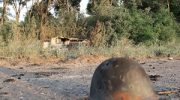By real actions, the alliance must convince the Kremlin that chemical attacks against Ukraine will not get out of hand, as in Syria.

Against the background of talks that Russia can to use chemical weapons in the war against Ukraine, NATO has collectively warned that such an escalation would have “serious consequences”. The Alliance also promised to help Kyiv with protective equipment by increasing its readiness to deal with chemical, biological or nuclear threats.
But what exactly can NATO do for itself and Ukraine? Natasha Lander Finch, a researcher at the Transatlantic Security Initiative at the Scrowroft Center, writes about this in an article for the Atlantic Council. She has no doubt that the Kremlin may use chemical weapons against Ukraine. After all, he had already used it to try to assassinate former spy Sergei Skripal in Britain, as well as during the assassination attempt on opposition leader Alexei Navalny. In both cases, a poison called “newbie” was used.
Moscow also supported the Syrian regime, which used chemical weapons to brutally kill civilians. She used her veto power in the UN Security Council to protect Syrian dictator Bashar Assad from responsibility. The Syrian precedent poses a dangerous temptation for the Kremlin. He may decide that if Damascus loses control, why should it be different for Russia's use of chemical weapons?
Read also: Chemical attack in a Chinese kindergarten: 51 children received serious burns
To prevent a chemical or biological attack by Russia, the United States and NATO must publicly demonstrate that the West is serious about such a threat and is preparing to respond. In recent weeks, White House spokesman Jen Psaki and Defense Department spokesman John Kirby have been doing just that. They raised this issue during press conferences and on social networks. NATO Secretary General Jens Stoltenberg has made it clear that the use of chemical or biological weapons would be a violation of international law. He expressed concern that the impact of chemical or biological weapons would be felt in NATO member states bordering Ukraine. Washington must also aggressively and actively debunk Russia's disinformation about such weapons of mass destruction.
In the meantime, NATO needs to update its strategy to combat chemical, biological, radiological and nuclear weapons. The Integrated Policy at the Strategic Level on the Prevention of the Proliferation of Weapons of Mass Destruction (WMD) and the Protection against Chemical, Biological, Radiological and Nuclear Threats (CBRN) were last updated in 2009. These documents no longer take into account numerous changes in international security. For example, they talk about cooperation with Russia as a key element in the non-proliferation of weapons of mass destruction. But today it is definitely impossible. Russia has also shown a desire to violate international norms and use chemical, biological, radiological and nuclear weapons. Therefore, NATO's new policy should place appropriate emphasis on the ability to defend against such a threat.
The Alliance intends to publish a new strategic concept at the summit in Madrid in June. The wording of a clearer policy on weapons of mass destruction in this document will send a clear signal to Moscow that its chemical, biological and nuclear threats are still under close scrutiny.
However, “signals” alone are not enough. Words must be supported by tangible actions. NATO has sent 40,000 troops to countries bordering Ukraine. They need to be strengthened by means of combating weapons of mass destruction. U.S. Air Force General Todd Walters has already activated NATO's Joint Task Force on Chemical, Biological, Radiological and Nuclear Weapons. These forces are on high alert and ready to deploy at any moment. If they are now sent to the alliance's eastern flank, it will demonstrate that NATO is seriously preparing for Russia's chemical or biological attacks./p>
Finally, the US Department of Defense must maintain its support for Ukraine through the Joint Threat Reduction Program (CTR), which was launched after the fall of the Soviet Union to destroy Soviet weapons of mass destruction. The CTR has long worked with Ukraine and Ukrainian officials to destroy military nuclear systems and improve biological protection and security. The United States can use this well-developed relationship with Ukrainian partners to quickly deliver additional supplies and equipment. In particular, the United States must provide protective equipment to combat chemical attacks.
Coordinated NATO efforts, consisting of public information and real action, could persuade Russia to abandon the escalation of the war against Ukraine through a chemical attack. Moscow must understand that such a blow will not help its failed invasion. And no one will turn a blind eye.
Earlier, the United States said it would respond if Russia uses chemical weapons in Ukraine .
We suggest you read carefully clarification from the Ministry of Environment on what to do in case of chemical hazards .




